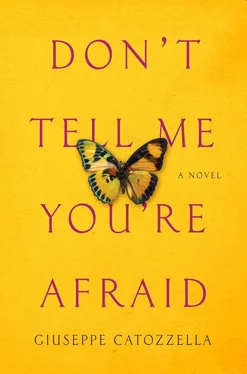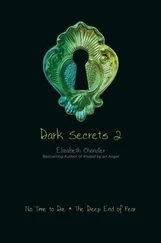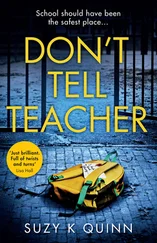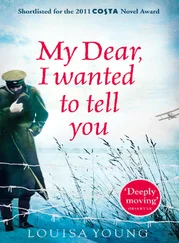I can never thank Hodan enough for those lengthy talks during endless days of seclusion in a hotel room, for her tears and sobs, for her laughter and her songs, and for giving me the courage and strength to tell her sister’s story. My gratitude to her for having entrusted me with this story, which I hope I have been able to re-create in some small way at least. And my thanks for the delicious Somali food that she brought me at the hotel when every restaurant nearby was closed.
Thanks also to Mannaar, who in the hours we spent together filled me with energy and vitality.
I also want to thank the young woman who in the book is called Nigist — who wishes to remain nameless, still afraid of what the Libyan police could do to her if they found her — for telling me about her endless conversations with Samia in the thirty days they spent together in Tripoli, in the same house with forty other women.

THIS IS A MOVING STORY about an extraordinary, spirited young woman. We first meet Samia in the setting of her childhood years, where two Somali families — hers and that of her childhood “brother” Alì—share meager rented quarters. Their courtyard with its giant eucalyptus tree is an island of normality in a country racked by poverty and brutal warring among clans, and it is these conditions that Samia is determined to overcome.
A word about the time line. Samia was born March 25, 1991, in Mogadishu, Somalia, and died August 2, 2012, in the Mediterranean. The narrative opens in 1999, when Samia and her best friend, Alì, are eight years old. By 2005, when Alì and his family are driven to move away, Samia is fourteen. In 2008 Samia travels to China to represent Somalia at the Summer Olympics in Beijing. When she turns twenty in 2011, she undertakes the long, harrowing Journey out of Somalia, hoping to eventually take part in the London Olympics in 2012. She drowns at sea trying to reach Italy in 2012, at twenty-one years of age.
The setting of the novel — the war-torn country of Somalia and, in particular, Samia’s beloved Mogadishu — acts as a character in its own right, the nemesis that Samia both loves and opposes and from which she is forced to reluctantly flee.
Born the same year Major General Mohamed Siad Barre was overthrown as president of Somalia and the government collapsed, Samia grows up with war as an “older sister.” Barre had ruled the impoverished country for more than twenty years, after seizing power in 1969 and establishing the Somali Democratic Republic. Under his dictatorship Somalia had been a relatively stable nation. Barre’s government collapsed in 1991 as civil war broke out. His departure from the scene (preceding his death in exile in Nigeria in 1995) left Somalia without a central authority and with a government in disarray: Chaos broke out as local warlords battled for territory. As civil war raged among feuding clans and their militias, municipal services ceased and the country was left on the brink of destruction, with no food, no clean water, and no power. In a city where the parched soil had crumbled to white dust and ruins dominate the landscape, the atmosphere was one of inevitability.
Despite the inexorable bleakness and despair, the indignity, violence, and loss, Samia’s determination thrives and a mood of hopefulness prevails throughout her early life. The setting of her childhood years — the two families living around the eucalyptus tree, Samia and her childhood “brother” Alì promising that nothing will ever come between them — is an oasis of calm, an island of normality, in a country racked by poverty and brutal warring among clans. Only when she eventually embarks on the Journey to escape the jagged circumstances of her homeland does Samia’s single-minded, hopeful optimism desert her.
It is on her journey to freedom that Samia becomes an outcast, an exiled refugee, or tahrib, who is ostracized from human society. The process of dehumanization begins in Ethiopia, in Addis Ababa, before she even starts the Journey, when she is forced to watch the other athletes practice from behind a wire mesh fence outside the stadium: “I remained a tahrib, running alone.” As the Journey drags on, the process of marginalization intensifies to the point where she is no longer able to remember who she was before. By the time she reaches Sudan, the traffickers are referring to their downtrodden charges as hawaian, animals.
When I finished reading the book, I was left wondering what had become of Alì, Samia’s onetime “brother” and “coach.” I asked Giuseppe Catozzella whether he had ever tried to find Alì when he was doing his research for the book. I knew he had spoken at length with Hodan, Samia’s sister, but I wondered if he’d been able to speak with Alì or knew where he might be now. I thought a brief word from this individual who is so central to Samia’s story might make a wonderful afterword to the narrative. Giuseppe was quick to introduce a note of reality, explaining that circumstances in Somalia made it impossible to trace Alì. He added that the latest word is that Alì is still in Somalia, although no one has seen him in years.
I also asked Giuseppe if he had copies of any of the letters that Samia read during the time she spent in prison in Ajdabiya. The text reads: “Pray, wait, and read. In fact there were letters in that prison. In Arabic, in Somali, in Ethiopian, and in English, left there somehow, for some reason, tossed aside in a corner, accumulated over years and years. Letters from prisoners or from their loved ones. Maybe they were mementos of the dead that the guards had never had the nerve to discard. In those letters there were lives. And so, reading them, I rediscovered what no longer existed inside of me. Life. Memories. Love. Promises. Courage. Hope.”
Throughout it all, the young woman with the resilience of a survivor remains stubbornly anchored to her family and her homeland, and though she leaves them, it is with the hope of pursuing her goal and finding her way back. All in all, Samia’s story of hope and aspiration, written with the passionate urgency of a firsthand account, is an affecting narrative with truly wrenching, very moving moments.
Anne Milano Appel

aabe:father
abaayo:sister
aboowe:brother
angero:a type of crepe
aroos:wedding celebration
buraanbur:Somali women’s poetry that expresses happiness or sadness in times of war or as a celebration of life
burgico:brazier
garbasar:shawl
gobeys:a kind of flute
griir:a game played by tossing pebbles
hawiye:militiamen, affiliated with Abgal
hooyo:mother
kaban:lute
kirisho mirish:a type of spicy meat and rice dish (Samia’s favorite)
koor:the bell a camel wears around its neck
niiko:Somali music danced to during weddings
qamar, hijab, diric:Islamic veils worn by women
shaat:a type of tea drink
shambal:a musical instrument consisting of two pieces of wood with a hole in the middle
shareero:a string instrument; a type of lyre
shentral:a board game
wiilo:tomboy





![Ally Carter - [Gallagher Girls 01] I'd Tell You I Love You But Then I'd Have to Kill You](/books/262179/ally-carter-gallagher-girls-01-i-d-tell-you-i-lo-thumb.webp)







